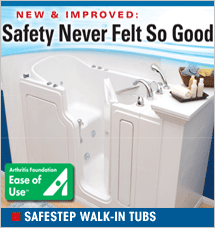
Colonoscopy is a frightening word. Can you imagine anyone delighting in this invasive test that requires abstaining from certain foods, an uncomfortable lead-up, and then the ultimate home invasion?
Following your doctor’s instructions and smart, thoughtful preparation, will make this awkward test more comfortable, and ultimately, successful.
A colonoscopy, according to the American Society of Gastrointestinal Endoscopy, allows your physician to check the lining of your colon (large intestine) for abnormalities by inserting a non-rigid tube into your anus and moving it slowly into the rectum and colon. The scope is flexible, making the procedure more comfortable than the rigid scope for a sigmoidoscopy. The flexible scope also offers gastroenterologists an up-close view of colon mucosa, seeing potential problems more clearly.
There are many reasons you may need a colonoscopy, including screening for colorectal cancer. The U.S. Preventive Services Task Force (USPSTF) of the Centers for Disease Control recommends screening for colorectal cancer using high-sensitivity fecal occult blood testing, sigmoidoscopy, or colonoscopy beginning at age 50 and continuing until age 75.
With no family history or problem that shows up on a test, your physician may retest you every ten years. Polyps or more serious issues may necessitate screening at five-year intervals or less, depending on the problem.
You have your orders. You will report to the gastroenterologist for a colonoscopy in a few weeks. The office asked you to stop by and pick up instructions as well as strange-looking liquids or pills or powders. This is no tea party. In the past decade, improvements from easier prep to imaging enhancements and more tolerable sedation (for most people) have made the colonoscopy a little less dreaded.
What to Expect
A week or two before testing:
- Some physicians may stop aspirin, to reduce bleeding in case of a polyp removal.
- Don’t stop any medications on your own. Check with the prescribing doctor or the gastroenterologist. They will make a decision based on your other health conditions.
- Some physicians may advise you to stop eating salads or red meat a week or days before the test.
The day before the prep:
- Have transportation in place. Most offices won’t let you drive after the procedure.
- The Cancer Alliance recommends eating a large breakfast, small lunch, and tiny dinner. They suggest this will make the prep easier.
The day of the prep:
- Plan your strategy. Reread the written instructions from the gastroenterologist.
- Mix your concoction with a flavored drink such as Crystal Lite (I prefer to use a flavor I do not normally like, to avoid a later taste flashback.) Go-Lytely™, the strangely named concoction, is still around, but there are other preparations. Miralax™ has a delightful ambiance with Gatorade if that is your doctor’s chosen prep. If given pills, you must drink the required amount of water.
Use cold, almost iced water. It’s not a good idea to start the prep unless you are completely prepared to enjoy it sitting down – preps react differently on different people. You may be one that finds it immediately effective.- Make your bathroom as comfortable as possible, for quality time on your throne. Bring your phone, a good book, tablet, and your drinking glass. Use a straw; it makes the medicine go down as Mary Poppins said, even if it is not “in the most delightful way.”
During the prep:
- Frankly, your bottom will be sore. Have baby wipes or diaper rash ointment available.
- Ask family members to eat away from home. The smell of lasagna while you are on the throne might drive you to drink something other than the prep.
- The cleaner your colon at test time, the better the test.
- After the prep, go to bed and get a good night’s rest.
The big day:
- The test may be anticlimactic after the prep. Procedures take about 30 minutes.
- Guidelines for this test recommend that physicians take at least six minutes to examine the colon as they withdraw the scope. The “New York Times” reported physicians who take six minutes or longer find more precancerous polyps.
- On my most recent test, I was given a photograph taken during my procedure. Ask for written test results.
- You’ll be groggy and probably tired whether or not you had anesthesia. You'll get sprung into the arms of your loved one several hours after waiting up, hopefully with a good report.
After the test:
The American Cancer Society recommends you ease back into your normal diet. If you experience a high fever, loose or bloody stools, severe abdominal pain, or difficulty in urination, call your doctor.
While most of us would rather go to the beach, a colonoscopy can discover polyps before they become cancerous. Colon cancer is the second leading cancer killer. Many colon cancers are stopped if testing is early and often.

Find my books and columns at www.amyabbottwrites.com.





































































